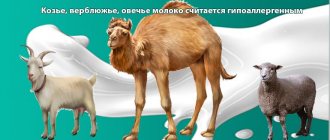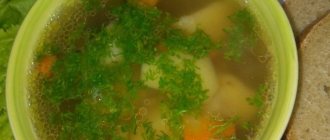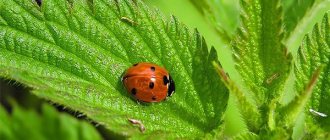Allergy to cow's milk protein occurs in children aged from birth to one and a half years. Its appearance is associated with intolerance by the baby’s body to special enzymes contained in milk.
Read about the symptoms, diagnosis and treatment of cow protein allergy in our other article. Here we will consider a very important issue for parents whose children have similar allergies - menu for a child with an allergy to cow protein .
Since the symptoms of this allergy are observed in the smallest breastfed babies, and in those who eat formula, and in older children who feed themselves, we will consider the menu for each of them separately:
- Mom's diet for an allergy to cow protein in a baby. For breastfed children;
- Allergy to cow protein: which mixture to choose. For children on artificial nutrition;
- Menu for a child with an allergy to cow protein. For children over one and a half years old;
- How to treat an allergy to cow protein.
Mom's diet for an allergy to cow protein in a baby. For breastfed children
The healthiest food for a newborn is, of course, mother’s milk. And those mothers who do not give up breastfeeding in favor of formula are right.
If your baby is diagnosed with an allergy to cow protein and is fed breast milk, he can continue to do so. In this case, it is the mother who must follow the diet.
So, what should mom not eat :
- Pastries based on butter, as well as cakes with cream.
- Chocolate, cocoa, peanuts. You can eat sweets with caution - your baby may develop diathesis.
- Fruits and vegetables with red or yellow fruit color. This means no red apples, berries (strawberries and cherries), watermelon, beets, radishes, tomatoes, rhubarb and red onions, peppers, pears, pineapples and turnips.
- Red meat and products made from it - sausage, various smoked meats and semi-finished products, beef in any form.
- Mushrooms and seafood.
- Chicken eggs.
- Cow's milk, of course, as well as cheese and all milk-based dishes - porridge, soups, sour cream, cottage cheese and fermented milk products.
Here's what you can do:
- Rice, buckwheat, corn porridge.
- Fish.
- Green fruits and vegetables. Green in color, not in ripeness. These are apples, pears, gooseberries, plums, green peppers, lettuce, leeks, cauliflower, Jerusalem artichoke, broccoli, peas, spinach, etc.
- Dried fruits and compotes made from them.
- Meat: lean pork and rabbit.
- Baked goods and delicacies based on sunflower or vegetable oil.
Allergy to cow protein: which mixture to choose. For children on artificial nutrition
It must be said that it is precisely in children whose parents feed formula that an allergic reaction to cow protein is most often observed .
If you are allergic to cow protein, you should not allow cow's milk into your baby's body. Not in any form, and most mixtures are made on the basis of cow's milk. So, what menu should you choose for a formula-fed baby with an allergy to cow protein?
In this case, you can use goat milk mixtures . Pediatricians advise, before switching to goat milk formulas, to test for an allergic reaction, since goat milk is close in composition to cow milk and sometimes replacing cow milk with goat milk does not affect the baby’s health in any way, and he continues to suffer from allergies.
On the baby food market, goat milk-based formulas are represented by the following manufacturers:
- “Nanny”, with and without prebiotics;
- "Mamako" (Mamako);
- "Cabrita Gold";
- "MD Mil SP Goat."
All these mixtures are produced for children of three ages: from birth to six months, from six months to one year and over one year. Read more here. In addition to goat milk, you can try mixtures with soy milk . In the baby food market, soy milk formulas are represented by all major manufacturers; the name includes the “Soya” mark, for example, “Heinz Soya” or “Nutrilon Soya”. Read more here.
The ideal solution would be lactose-free mixtures , in which the source of amino acids - milk - is replaced with another component. This can be soy protein isolate, casein hydrolysate, calcium caseinate, a mixture of amino acids or whey protein.
Read more - lactose-free formulas (dairy-free formulas) for artificial feeding.
Also, children with an allergy to cow's milk protein should not cook semolina porridge , since it contains vegetable protein, which can cause an allergic reaction in the child's body.
It is not advisable to give children meat (baby meat puree) and dishes with chicken eggs as complementary foods.
Nutrition for mother and baby with cow's milk protein allergy
This article will have a very limited audience. And yet, I believe that it needs to be written, even if there are no more than ten people. Oddly enough, there is very little useful practical information on the Internet about this disease. Therefore, I will be glad if my experience is useful to someone. We are talking about an allergy to cow's milk protein.
Causes of occurrence . Even during the preparation courses for motherhood, they explained to us that in rare cases it happens that a child is allergic to cow's milk protein. Despite the fact that this is the most common type of food allergy in infants, it occurs in 2-7% of babies. Most often, this allergy affects children who are bottle-fed and rarely it can develop in children who are breastfed (this is 0.5% of all cases). Can you imagine how lucky we are? When the specialist at the perinatal center mentioned this so casually, I never thought that this could happen to me and my baby. No one in our family had any allergies, and here it is on you. As it turned out later, I most likely provoked this allergy myself. After the maternity hospital, while already at home, I pounced on dairy products. Every day I drank from 0.5 to 1 liter of yogurt, kefir or fermented baked milk, ate a pack of cottage cheese, drank a huge number of mugs of tea with milk, ate sandwiches with cheese, porridge with milk. And all because of the fear of losing breast milk. As a result, by the end of the first month of life, a rash appeared on the child’s skin. It did not fade away, but only became brighter and spread throughout the body. I didn’t eat anything red, sweet, spicy or salty and wondered what could have happened. At the clinic they explained to me that it was most likely an allergy to cow's milk protein. I was put on a strict diet.
What can you eat and what can’t you eat? In addition to sweets, coffee, spices, fried and floury foods, as well as red fruits and vegetables, I was no longer allowed to eat anything dairy - including cottage cheese, kefir yoghurts, butter, sour cream and cheese. Beef and chicken (including eggs) were also banned. My diet consisted of porridge cooked in water, pasta, potatoes (boiled or baked in the oven), zucchini, cauliflower, soups and dishes made from rabbit or lean pork. Fruits you could eat were green pears and peeled apples and bananas. For a long time, my dessert was either “Galette” cookies (“Maria” and “Leningradskoe” contain margarine, so I’m in the air again) or a piece of black bread, on which I put 4 banana slices and called it my favorite cake. Well, what can I say, the diet is effective - in 4 months I lost almost 7 kilograms. I scoured the Internet, searching for “What can a nursing mother do if she is allergic to cow’s milk protein.” I really wanted at least a hint of variety in my diet, I was looking for some recipes, something that I could eat, but I just didn’t know about it. I was bothered by the very time-consuming preparation of carrot cutlets with semolina and raisins; I was simply in the wildest delight when I realized that the baby was not pouring out onto the puff pastry and baked puff pastries with banana; I found hard, unsweetened, tasteless banana gingerbreads, which also did not cause any allergic reaction. From time to time I tried to introduce “milk” into my diet: a thin, thin layer of butter on a piece of bread at breakfast. A tablespoon of low-fat cottage cheese. A teaspoon of milk on a plate of porridge cooked in water. All these experiments, up to six months, gave at least a small allergic reaction. A red rash appeared on the baby’s skin all over his body, or the skin became very dry. I’ll immediately share my experience of how I dealt with dry skin. “Baby cream” didn’t help us at all. Steamed olive oil too. We bought “Special cream” and emulsion for bathing and during acute periods we smeared the child from head to toe 3-4 times a day. It is especially important to apply moisturizer after swimming. But the real discovery for me was the French cosmetics “La Roche-Posay”. It's not cheap, but very economical! A bottle of Lipikar baum AP+ (bought for 800 rubles at the beginning of the year) lasts for 4-5 months.
Life has become easier. As the doctor warned, as soon as the baby was six months old, my diet became less strict. It's all about mature enzymes that are capable of breaking down more complex substances that come with mother's milk. My daughter began to “allow” me to drink fermented baked milk and yogurt, eat cheese and cottage cheese, white chicken meat, eggs in baked goods (the dangerous protein is destroyed at a temperature of 180 degrees), butter, unsweetened cookies that contain margarine (oh! Cookies! My very a big joy!). The time for new experiments has begun. Sometimes unsuccessful. One day I baked a pie. I made the dough myself and made the dough with milk. I pinched off a small piece and by evening there was a severe rash on the child’s skin. I ate a sandwich with melted cheese - same story. But every month my diet expanded and became more varied. Today we are almost 11 months old. I still don’t drink milk and eat porridge with water, but I already eat ice cream, I can afford a piece of chocolate cake and even strawberries.
Baby nutrition . As for my daughter, we introduced complementary foods at 6 months and started with vegetables, then added porridge. Unfortunately, allergy to all dairy products remains. With half a teaspoon of cottage cheese (we tried it at 9 months), the girl’s face became covered with raspberry spots in 5 seconds. They immediately gave me Suprastin. They reacted a little more calmly, but still with a rash, to the children’s “Little Sissy” and “Snowflake.” The same story with meat - there is a strong reaction to veal, you only have to eat turkey and rabbit. Lack of calcium makes itself felt. At 11 months we only have two bottom teeth. What solution did we find? A mother I know suggested giving me goat's milk. I cook porridge on it. You can also make cottage cheese. And with calcium. It is done very simply. Pour 100 ml of goat's milk into a saucepan and bring to a boil. Pour out about a third of a 10 ml capsule of a 10% solution of calcium chloride (calcium chloride), which can be bought at any pharmacy. The milk will curdle immediately. Drain the mixture into a colander. The whey drains, and very healthy calcined cottage cheese remains on the mesh.
Weaning . If you are also faced with a diagnosis of “Allergy to cow’s milk protein,” then it will be more beneficial to continue breastfeeding as long as possible. The transitional stage of weaning is night feeding from a bottle with yogurt, fermented baked milk, kefir or cow's milk. Since we can’t do any of this yet, I continue to breastfeed. Of course, no one has canceled formula, but nothing can be healthier than breast milk for your baby. In addition, it is also a matter of saving. Good mixtures are expensive these days. I understand that I may encounter difficulties in the future, because the older the child gets, the more difficult it is to resolve this issue. However, you have to choose the lesser of two evils...
When will it end? Various sources write that in 50% of cases of allergy to cow's milk protein, recovery is noted by the end of the first year of life, and within 3-5 years, almost 80-90% of children cease to suffer from this disease. In rare cases, a cow's milk protein allergy can last a lifetime. I want to hope for the best option...
In conclusion, I will say that motherhood is still my greatest happiness. Love for my child, the desire to raise him healthy, to protect him from the unpleasant consequences of allergies became the main incentive for me to survive the “hungry times.” This diet, which lasted almost a year, instilled in me the principles of proper nutrition. Even if it is possible, I will not season the salad with mayonnaise; I will prefer olive oil. I try to look for the positive in everything. I fit into the dress I wore in my first year!
Menu for a child with an allergy to cow protein. For children over one and a half years old
When the baby grows up, his menu needs to be diversified. He no longer feeds only on formula or breast milk, he needs purees and porridge.
Porridge can be cooked from another type of milk, not cow's. If you are allergic to cow protein, any cereal is suitable for porridge.
For example, it could be soy milk , it is made from soybeans. You can either buy it or make it yourself. To make soy milk at home, you need to soak the soybeans and then boil the resulting “raw milk.”
Oat milk . It's not actually milk, but you can also make it yourself at home. It is made from oatmeal (not instant oats) and water. Oatmeal is soaked in water and then crushed. The result is a product similar to milk; you can use it to cook porridge for babies.
Rice milk . It is prepared according to the rice porridge recipe. That is, rice porridge is cooked in water, and then it is crushed with a blender.
Children with allergies to cow protein can be given fermented milk products - kefir or fermented baked milk. The enzymes contained in cow's milk break down into their components during the preparation of the fermented milk product. And the child’s body can try to digest these components. So you can try giving your child kefir and observe his body’s reaction - if symptoms of an allergy to cow protein appear (rash, itching, nausea or vomiting), then fermented milk products should be excluded from the menu.
There are mothers who think that by boiling cow's milk, they will get rid of all the harmful substances in its composition, including allergic protein. This is wrong! The protein in cow's milk is preserved under any chemical or thermal influences on it .
What formulas are suitable for a child with a cow protein allergy? ~
The most common question any mother asks if her child is allergic to cow protein is what formula is right for him? What to feed a baby with a cow protein allergy ? Which mixture to choose if you are allergic to cow protein?
A cow protein allergy means that the child’s body does not accept and digest cow’s milk protein, more about this here.
Accordingly, the best way out in such a situation is to feed the baby with infant formula without milk. Without cow's milk.
There is also the option of using food in which this same protein is already partially or completely broken down.
Modern pediatrics and the baby food market offer several types of formulas that are suitable for feeding a baby with an allergy to cow protein.
So, the following mixtures are suitable for allergies to cow protein:
We talked in detail about the features of each type of food here, now we will briefly repeat this and list directly the brands and brands of baby food that you can try to give to children with an allergy to cow protein.
Goat milk nutrition
This baby food uses goat's milk instead of cow's milk and, therefore, does not contain the allergen - cow's milk protein.
Goat's milk is considered to be closer in composition to women's breast milk; it is also more easily absorbed by fragile infants.
Read more here.
There are four goat milk mixtures on our market - “Nanny”, “Kabrita”, “MD Kozochka” and “Mamako”. We described each of them in detail in the relevant articles, read by following the links.
So, goat formulas for children with allergies to cow protein :
- "Nanny classic" - from birth to one year,
- "Nanny 1" - from birth to six months,
- "Nanny 2" - for children over six months old, but under one year old.
- “Nanny 3” is over a year old.
- "Kabrita 1" - from birth to six months,
- "Cabrita 2" - for children over six months old, but under one year old.
- Cabrita 3 is over a year old.
- "MD mil SP Goat 1" - from birth to six months,
- "MD mil SP Goat 2" - for children over six months old, but under one year old.
- “MD mil SP Kozochka 3” - over a year old.
- "Mamako 1" - from birth to six months,
- "Mamako 2" is for children over six months old, but under one year old.
- "Mamako 3" is over a year old.
More information about the range of each manufacturer:
MD Mil Kozochka - review of baby food from the manufacturer
Nanny: review of baby food from the manufacturer (mixtures, purees, porridges)
Mamako - assortment of baby food from the manufacturer (mixtures, porridges, purees)
Kabrita - assortment of baby food from the manufacturer (mixtures, porridges, purees)
Soy mixtures for cow protein allergies
The vegetable protein contained in soy practically does not cause allergies , which is why this diet is recommended for children with allergies.
Soy mixtures, however, are introduced into complementary foods only with the permission of the pediatrician and only when the child is at least six months old. At this age, his body better absorbs this nutrition.
Soy mixtures: what is it, review of manufacturers
Soy mixtures: pros, cons, myths
It is also worth remembering that soy formula, no matter how good it is, should not be present in a child’s diet for longer than 4 months .
For those who want to try soy formulas for cow protein allergies, there are a wide variety of options:
- "Nutritek" - "Nutrilak Soya",
- “Nutricia” - “Nutrilon Soya”,
- “Humana” - “Humana SL”,
- "Friso" - "Frisosoi"
- "Similac", "Similac (Abbott)" - "Similac Izomil",
- “Bellakt” - “Bellakt Soya”,
- "Materna", "Materna" - "Materna Soy", "Materna Soy with LC-PUFA",
- "Enfamil" - "Enfamil Soya" (Enfamil Soya)
- TD "Lasunya" - "Detolakt Soya"
- "Mamex" - "Mamex Soya" (Mamex Soya)
Mixtures with hydrolyzed protein for allergies to cow protein
Food for children prone to various types of allergies, including allergies to cow protein.
The composition of such mixtures differs in that the protein in them is split into peptides, it is easier to digest .
Hydrolyzed mixtures come in two types:
- Casein hydrolysates . Casein breaks down.
- Whey protein hydrolysates . Proteins are broken down.
In turn, hydrolysis can be partial or high.
What mixtures with hydrolyzed protein are there?
"Friso" :
- Frisopep AS, casein,
- Frisopep, whey,
Nutritek, whey hydrolysate:
- Nutrilak GA
- Nutrilak (InfaPrim) Premium Peptidi MCT,
Nutricia, whey hydrolysate :
- Nutrilon pepti allergy,
- Nutrilon pepti gastro,
Humana , whey hydrolysate:
- Humana GA 1,
- Humana GA 2,
- Humana GA 3.
"Hipp" ( HiPP), whey hydrolysate:
- HiPP GA 1,
- HiPP HiPP 2 Combiotic.
Nestlé whey hydrolysate :
- NAN GA 1,
- Alfare Allergy,
- Nestogen GA,
- Peptamen Junior,
Mead Johnson , unfortunately, the company decided to leave the Russian market :
- Nutramigen Lipil, casein.
- "Pregestimil lipil", casein.
Remember that hydrolysates for allergies to cow protein (and any other type of allergy) are introduced into the child’s menu more slowly than others; too rapid introduction may cause the child to refuse food. You wouldn’t like it either - these mixtures have practically no taste, especially since there is not a drop of sweetness in them due to the absence of lactose (in some types), an integral component of milk.
How to treat cow protein allergy
What should you do if your baby breaks his diet and eats something that causes an allergic reaction?
For the youngest, pediatricians recommend Enterosgel . This sorbent is specially designed for the bodies of newborns; its components bind foreign protein and remove it without having a negative effect on the body.
To get rid of the symptoms of an allergy to cow protein, pediatricians prescribe antihistamines , such as Zyrtec and Suprastin.
From ointments and gels, you can use “Fenistil”, “Gistan”, “Lakri”, “Skin Cap” from birth. Some gels and ointments should absolutely not be used for contact with the skin of a newborn, so before treating your child for allergies with ointment, consult your pediatrician.
Be healthy!
“ Allergy to cow's milk protein ” - this phrase sounds like a death sentence for many young parents. If a newborn is given a similar diagnosis, this means that he cannot eat anything from cow's milk, since it is the special protein contained in cow's milk that causes an allergic reaction. In this article we will list what can be given to a child with an allergy to cow protein.
Mixtures
Porridge
Vegetables and fruits
Goodies
Allergy to mixture - how to determine?
If your baby develops a skin rash, you should contact the baby’s primary care pediatrician to clarify whether the rash is actually of an allergic nature. Then, together with the doctor, it is necessary to exclude contact dermatitis (possible allergic reaction to cream, diapers, baby laundry detergent), which occurs exclusively at the site of contact of the baby’s skin with the provoking allergen. After this, allergies to foods and medications are excluded. After completing all the above-described manipulations, you can begin to think that a bottle-fed child most likely reacts to cow’s milk proteins.
How does an allergy to formula manifest in a child: diarrhea, enteritis, constipation, vomiting, regurgitation, intestinal colic, shortness of breath, dermatitis, skin rash
Mixtures
Formulas are fed to those babies who, for some reason, do not want or cannot breastfeed. A huge range of formulas for artificial feeding in our stores is represented by a large number of manufacturers. However, cow's milk is added to their composition as a necessary component. Such mixtures are called “milk”.
Salvation for mothers whose children are allergic to protein is mixtures made with soy or goat milk . They do not contain cow's milk; instead, the source of carbohydrates in this diet is artificially added substances, such as glucose or sucrose.
It is not difficult to guess that the source of protein in soy mixtures is soybean vegetable protein, and in goat milk mixtures it is goat milk .
Read more about dairy-free formulas, types, composition, pros and cons in our articles.
Allergy to mixture - what to do?
If your baby has allergic reactions to the formula, there are several options to choose from, and which one to choose depends on the severity of the symptoms:
— If, in addition to skin rashes, the baby has excess body weight and regurgitation, this is overfeeding and the daily and one-time feeding volumes should be reduced to the doses recommended for this age. In the case when the baby is already accustomed to eating a lot, the mixture should be made less concentrated, i.e. just dilute it. This will significantly reduce the load on the digestive tract, the processes of fermentation and putrefaction in the intestines will decrease, the mixture will be digested much better and allergic manifestations will also decrease accordingly
- If the skin rashes are moderate or very minor, you can simply try changing one mixture for another, with preference given to fermented milk mixtures or mixtures containing probiotics. The use of such mixtures creates all the favorable conditions for the proliferation of beneficial lactic acid bacteria in the baby’s intestines, making the mixtures much easier to digest and cause allergies in isolated cases
— It is necessary to completely exclude the provoking allergen from the child’s daily diet (in this case, cow’s milk protein). This should be done if the two options described above did not help cope with allergic manifestations or if the allergy symptoms are very severe
If a child is allergic to formula, then the provoking allergen (cow's milk protein) can be eliminated in the following ways:
— Replace the cow's milk formula with a goat's milk formula. This option is the most preferable, since goat milk proteins are complete animal proteins and are absolutely not inferior in nutritional value to cow milk proteins. At the same time, the structure of goat's milk proteins is noticeably different from cow's milk proteins, which is an alternative option in the case when a child is allergic to cow's milk protein. Throughout the first year of life, adapted formulas based on goat's milk can be used as the child's main diet. However, unfortunately, some children are also allergic to these mixtures
— Replacing cow's milk-based formula with a special soy formula. This used to be a common option (before the advent of goat's milk formulas), but is now less preferred. However, it is soy mixtures that are used to feed babies with allergies to both cow’s and goat’s milk, since the structure of plant proteins differs significantly from animal ones. Unfortunately, soy protein has less nutritional value and is somewhat less digestible and absorbable. In addition, soy formulas also differ far from being for the better in taste compared to milk formulas. The likelihood of developing an allergy to soy mixture is about 15%
— The third and final option is to permanently replace the cow's milk-based formula with a therapeutic hypoallergenic formula. For many children this option is the most preferable.
Transferring the baby to another formula should be done gradually over a period of five to fifteen days. This should be done even in the event of an allergic reaction, since the baby’s body must gradually get used to the new product in order to avoid digestive breakdown, bowel disorders, or simply refusing to use the new mixture.
Rice milk is another way out of this situation. If the mother does not have (or has run out of) her milk or the child is allergic to formula milk, both cow and soy protein, there is only one solution left - to feed the baby with macrobiotic rice milk and formulas made on its basis. Like soy-based formulas, rice milk also lacks some vital fats, the deficiency of which will have to be replenished with the help of special additives introduced into the child’s diet.
Porridge
Older children can eat porridge in addition to formula.
But everyone is used to cooking it with milk - it’s both tastier and healthier.
What can you cook porridge with, other than cow's milk?
Firstly, you can buy the same goat's milk and use it instead of cow's milk. It can be found in some supermarkets, but the healthiest and most vitamin-rich goat milk is sold at local markets. Villagers who have goats on their farms sometimes sell their milk at fairs.
Secondly, in addition to goat milk, there is also rice, soy and oat milk. What is it and how to prepare it?
Rice milk is made from brown or brown rice. You can buy it in a store, pharmacy or prepare it at home. A hypoallergenic product of plant origin, rice milk contains magnesium and copper, B vitamins and, although it is not as healthy as cow milk, it is quite possible to cook porridge with it.
Manufacturers of rice milk : “V-fit”, “Vegan”.
Soy milk is made from soybeans. Just like rice milk, it does not contain lactose, but does contain vitamins A, D, E. Soy milk is a low-calorie product, it can be bought in a supermarket (the price tag usually says “soy product”), or you can prepare it at home.
Producers of soy milk : “SaharOff”, “Banzai”, “Bona Vita”.
Oat milk is made from oats and contains iron, phosphorus, calcium and various vitamins. Children can cook porridge with oat milk; the only limitation is that the product is not hypoallergenic and should not be used by children with allergies to cereals .
Manufacturers of oat milk : “Healing grain”, “Organic”, “OTP”.
According to reviews from mothers, rice, soy, and oat milk can be used to prepare porridge for a child with an allergy to cow protein.
For complementary feeding babies, you can cook porridge using vegetable decoctions - that is, for example, you boiled zucchini for lunch, and you can cook porridge in the evening using the decoction of zucchini.
In the end, porridge can be cooked simply in water , adding sugar or salt for taste.
In order to smoothly switch from porridge with milk (be it goat or soy, or any other) to porridge with water, experienced mothers advise gradually adding more water and less milk to the porridge. Within two weeks, you can quite successfully “transfer” your baby to porridge with water.
What cereal should I use to make porridge for a child with an allergy to cow protein? From any, if the baby does not have other types of allergic reactions, for example, to corn or wheat.
So porridge can be safely included in the menu if a child is allergic to cow protein.
Vegetables and fruits
As in the case of the diet of a mother whose child is allergic, doctors advise eating “green” vegetables and fruits.
These can be the following vegetables :
- Greens – spinach, parsley, dill, lettuce;
- Potato;
- Cabbage of all varieties;
- Zucchini;
- Cucumbers;
- Squash.
And fruits :
- Apples of “green” varieties;
- Plum or sloe;
- Prunes;
- Pears.
Pediatricians call zucchini the most hypoallergenic of vegetables. Therefore, it is with this that you need to start giving the baby complementary foods in the form of purees. In general, doctors recommend not mixing several types of vegetable purees with each other. If your toddler eats zucchini puree well, you don’t need to add broccoli puree, because he won’t eat it in its pure form.
From fruit purees, it is better to start with apple or pear purees, because they are “green” and an allergic reaction to them is least likely. Kids also like plum and banana.
If you are allergic to cow protein, potatoes are readily included in the menu. After all, you can prepare many dishes from it - cook soup, bake pies, serve it as a side dish. Many mothers advise before directly preparing a potato dish to soak it in water for 30-40 minutes.
Treats and drinks
What should be included in the menu for children who are allergic to cow protein as a dessert?
Many manufacturers of rice, soy and oat milk, which we wrote about above, also produce yoghurts and other “dairy” products . For taste, pieces of fruit are added to them, however, you can do this yourself.
You can bake cookies, casseroles, and oatmeal . Some mothers cook the same thing, but not from oatmeal, but from chickpeas. You can always find many baking recipes using these products on the Internet.
If desired, the mother can give the child dry foods, crackers, marshmallows, crackers, marshmallows - all these products can be eaten by children with an allergy to cow protein.
Children love dried fruit compotes . For children with allergies, compotes made from rose hips and prunes, pears and apples are suitable.
Kissels may also appeal to children. According to reviews from mothers, oatmeal jelly from Velle is distinguished by its rich taste and abundance of useful substances in its composition. Velle jelly contains lacto- and bifidobacteria, probiotics, fiber, calcium, fructose and other substances.
Older children can be offered weak black tea, non-carbonated mineral water or fruit juice.
We hope these recommendations will help you create a menu for a child with a cow protein allergy.
We have also collected for you recipes for breakfast, lunch, afternoon snack and dinner for a child with an allergy to cow protein.
In an ideal situation, the child should be fully breastfed for the first 6 months of life, and then complementary foods with a basic milk diet are introduced until the age of one year. For certain reasons, the mother cannot always breastfeed the baby, and then the baby has to be switched to infant formula. Determining which is best for feeding a baby is a difficult task, especially when it comes to how to choose the right hypoallergenic formulas for newborn children with allergies and infants prone to food allergies.

If the mother cannot continue breastfeeding, it is necessary to choose a suitable formula for the baby
Types of hypoallergenic mixtures
Some formula-fed babies may have allergic reactions to cow's milk, which is the basis of most infant formulas. Allergies can manifest themselves as:
- rashes on the child's skin;
- colic;
- disturbances in stable bowel movements;
- frequent regurgitation and other problems related to the functioning of the gastrointestinal tract.
In such cases, pediatricians recommend that parents replace the formula with a hypoallergenic one. There are three types in total:
- Preventive. It is prescribed to children who are prone to allergies.
- Treatment and prophylaxis. This hypoallergenic mixture is used in the presence of mild symptoms of food allergies.
- Therapeutic. Its use usually concerns cases where the child has a high degree of intolerance to the protein in cow's milk.
The choice of modern hypoallergenic milk formulas is simply huge. Some are based on split milk protein (hydrolysate), while other dairy-free infant formulas are based on soy protein isolate.
The hypoallergenic mixture allows you to provide the newborn’s body with all the necessary nutritional elements, mineral salts, vitamin groups and other useful substances, as well as charge it with energy. The metabolism of proteins in the body of a 4-5 month old child who eats exclusively a hypoallergenic formula is almost the same as in a baby who is breastfed.
Dairy-free soy-based formula
If a child is intolerant to infant formulas based on cow's milk, their soy analogues are used to feed the baby. They have a sweeter taste compared to dairy products. If after several feedings the baby’s body accepts and assimilates the hypoallergenic soy mixture well, then it can be safely left for further use in the baby’s diet. Below is a list of the most famous dairy-free soy formulas:
- Dutch: Frisosoy and Nutrilon Soy from the companies FrieslandCampina and Nutricia, respectively;
- guest from Germany Humana SL, manufacturer Humana;
- US representative Endfamil Soy, produced by Mead Johnson Nutritionals;
- the Belarusian company Volkovysk OJSC Bellakt offers consumers Bellakt SOY;
- Ukrainian Detolakt Soya from the Baltic milk canning plant for children's products;
- Danish Similak Izomil.
How to properly introduce soy mixture?
Soy-based milk formulas require compliance with certain input rules:
- Close relatives of the baby should not be allergic to soy or legumes.
- When the child reaches 5-6 months of age.
- Gradual introduction into the diet over 5 days or a week.
- The need to completely remove dairy products from the menu, which also applies to secondary products such as cheese, cottage cheese and butter.
- The prohibition on entry is personal intolerance to the components of the hypoallergenic mixture. It may be accompanied by the appearance of new rashes on the skin or worsening of old dermatitis, vomiting, regurgitation, disruption of normal bowel movements and other manifestations.
- Use for three months.

Regurgitation after drinking a certain mixture may indicate an individual intolerance to the body
Unfortunately, hypoallergenic soy formula cannot always help in solving the problem of feeding a baby, especially for children immediately after birth. According to statistics, 30-40% of those children who are allergic to cow's milk protein will not tolerate soy protein either. In the case where the child, in addition to everything else, has allergic enterocolitis, these numbers rise to 60%.
The benefits and harms of using soy milk formulas in the nutrition of very young children have been discussed for a long time, but over the course of 60 years of using infant soy formulas for feeding infants, they have not yet been able to prove that this type of nutrition is dangerous for the child’s health.
Hydrolysis mixture
The lack of evidence that soy protein is harmful to formula-fed babies prone to food allergies does not make soy formula more popular. In most cases, doctors and parents prefer hypoallergenic hydrolysis mixtures. They are made by hydrolysing the protein found in cow's milk. They can be divided into 2 groups: casein and whey protein hydrolysates.
Casein milks are based on hydrolyzed casein. They are rare in our market, although their use for treating children with food allergies is quite common. Examples of casein hydrolysates are:
- Alimentum from Abbott Laboratories. Made in the USA.
- Frisopep AS from Holland. Manufacturer: FrieslandCampina.
- Nutramigen and Pregestimil from the American company Mead Johnson Nutritionals.
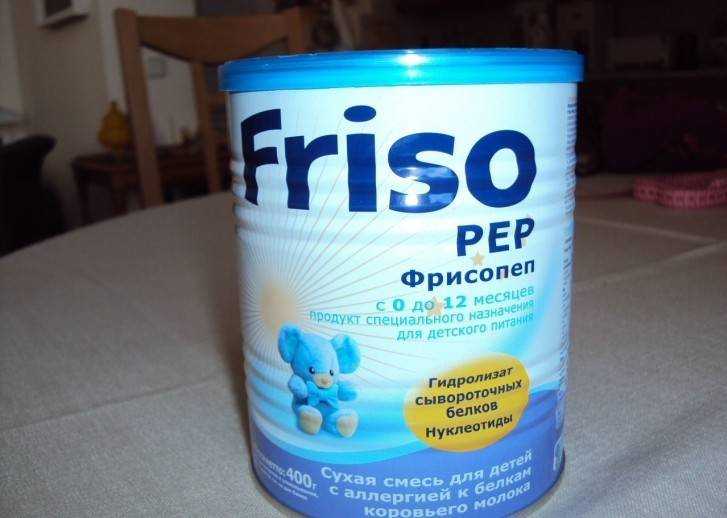
Frisopep AS is one of the most popular hydrolysis mixtures available on our market
Compared to casein, whey protein hydrolysates have an important advantage, namely, their proximity to the standard composition of breast milk. They can be called full-fledged substitutes for mother's milk, but due to their bitter taste they are not always popular with babies. If a newborn refuses to be fed with a hydrolyzate of this kind, you should first make the mixture less concentrated, that is, dilute a smaller amount of dry powder in the prescribed amount of water.
Highly hydrolyzed
In accordance with the degree of protein breakdown, highly hydrolyzed and partially hydrolyzed mixtures are distinguished. Highly hydrolyzed ones include:
- Alphare. Manufacturer: Swiss company Nestle.
- Frisopep. It is produced in Holland by FrieslandCampina.
- Nutrilak PEPTIDI MCT produced by the Russian company Nutritek.
- Nutrilon Pepti Allergy from Nutricia from Holland.
Their purpose is relevant in case of a pronounced allergic reaction, accompanied by atopic dermatitis or disorders in the functioning of the gastrointestinal tract. The use of such mixtures leads to good and quick results.
Partially hydrolyzed mixtures
Rating of partially hydrolyzed mixtures:
- Frisolak 1 GA and Frisolak 2 GA. Produced in Holland by FrieslandCampina.
- Humana GA 1, Humana GA 2 and Humana GA 3. Manufacturer: German company Humana.
- The Austrian company HiPP produces HiPP Combiotic GA 1 and HiPP Combiotic GA 2.
- Nutrilak Hypoallergenic 1 and Nutrilak Hypoallergenic 2 from Nutritek, Russia.
- NAN hypoallergenic mixtures NAN GA 1 and NAN GA 2. Manufactured by Nestle, Switzerland (review of the NAN hypoallergenic 1 mixture).
- Topic 1 HA and Topic 2 HA of the Russian company Unimilk.
The listed options are recommended for children who are prone to allergies. Their use contributes to the development of good tolerance to dairy products in the future.
Another representatives of partially hydrolyzed mixtures are “Similac Hypoallergenic” and “Similac Alimentum”. Similak hypoallergenic mixture is the best option for newborns with allergic relatives. It is suitable for children from birth to one year of age.

The use of a partially hydrolyzed mixture such as Nutrilak HA helps prevent the occurrence of allergic reactions to protein or eliminate their minor symptoms Amino acid and fermented milk mixtures
Amino acid mixtures do not contain proteins, but contain only amino acids that cannot provoke allergies. Among them:
- Nutrilon amino acids;
- Alphare Amino;
- neokate LCP.
If you have allergies, special fermented milk mixtures are perfect, but their share in the child’s diet should not exceed 50% of the daily amount of food. The second half falls on unleavened analogues.
If allergic manifestations do not decrease, you should replace the fermented milk mixture with a hypoallergenic soy-based mixture or hydrolyzate. They should be introduced gradually over a week and should not be used for too much longer than a four-month period.
After the allergy symptoms have completely passed, the child should be transferred first to therapeutic and prophylactic formulas, then to preventive ones, and only finally to regular formulas. This sequence of transition is explained by the fact that therapeutic and therapeutic-and-prophylactic mixtures do not contain allergens, so the development of protective mechanisms to milk does not occur in the baby’s body.
Child allergies are a disease that many mothers face. Seeing your beloved baby suffer from harmless milk porridge is very difficult. It is necessary to figure out what to feed a child with a food allergy so as not to cause harm.
Allergies occur as a response of the body to certain foods. It most often occurs in infants as they try foods for the first time in their lives. A young body can perceive everything new as an invasion that is dangerous for the body. It is important to receive competent and timely treatment so that the child can endure this illness as comfortably as possible and “grow” out of it. One of the treatment methods is to create a menu suitable for children with allergies.
"Non-dairy" milk: let's overcome allergies!
What is an allergy to milk protein in children, how to cope with it, what to replace milk with, what formula to choose? Almost all babies are prone to irritability and insomnia from time to time. But if your bottle-fed child seems overly fussy and irritable to you, then you should think about the possibility of an allergy to dairy products, that is, to milk protein . lactose intolerance , the inability to digest this type of sugar due to the lack of sufficient enzymes in the body. But there is another problem that is much less known - cow's milk protein allergy . According to statistics, from 1 to 7.5% of artificially fed children suffer from this type of allergy.
It is worth noting that 80% of dry infant formula formulas are based on cow's milk.
What is a protein allergy? If doctors make such a diagnosis, it means that the child has an incorrect immune reaction of the body to this protein: cow’s milk protein that has entered the body is recognized as an “enemy” and a “war” begins, the destructive consequences of which manifest themselves as an allergic reaction.
40% of children with a similar diagnosis are allergic to soy proteins (due to the similar structure of the molecules) - so when choosing a soy-based mixture, additional tests and tests must be done!
Researchers have not fully discovered the cause of milk allergies, nor the fact that some children are more prone to such reactions. According to pediatric nutritionists, this is due to a combination of hereditary factors and the time of introduction of cow or soy milk proteins into the diet (the earlier they appeared in the baby’s diet, the higher the risk of developing allergic reactions).
Signs of a milk allergy May appear during the first 6 months of a child's life: symptoms may appear quickly and the reaction may be delayed.
The rapid onset is manifested by sudden symptoms: vomiting, hives, wheezing, swelling and other more serious ones. A delayed reaction is usually manifested by upset bowel movements, colic, irritability, and weight loss. This type of allergy is very difficult to recognize, since similar signs can be observed under any other circumstances. In most children, by the age of 2 years, the symptoms of intolerance decrease or disappear altogether.
If the allergy is caused by intolerance to the milk sugar lactose, then excessive gas formation, a bloated tummy and diarrhea are also observed.
How is a milk protein allergy determined? Of course, only the doctor who observes your child can make an accurate diagnosis.
First, he asks you about possible hereditary causes of allergies and whether you suffer from any types of allergic reactions. Secondly, the laboratory performs an analysis of the child’s stool, which makes it possible to determine the exact cause of the illness. It usually contains undigested milk sugar, traces of blood, and has an acidic pH.
There are also “superficial” tests. For example, a drop of milk protein is injected subcutaneously, and if there is an allergy, a blister forms at the injection site. Such a test is imperfect and gives inaccurate results, but as an additional analysis it is important for the doctor.
Treating Milk Protein Allergy The first step is to switch to a soy-based diet. Soy formulas do not contain milk proteins, but the vitamins and nutrients are similar to cow's milk. If, however, the allergy also extends to soy proteins (from 8 to 15% of children), then you need to switch to hypoallergenic formulas, which are modified in such a way as to eliminate any allergic reactions. Unfortunately, such mixtures are 2-3 times more expensive than regular milk substitutes.
Choosing soy formula Just 10-15 years ago, choosing the right baby food for newborns suffering from allergies was very difficult, since there were no specialized formulas for feeding. Today, in pharmacies and specialized stores you can find a variety of dry formulas for artificial feeding of babies.
The compositions of such mixtures contain hydrolyzed (partially broken down) milk protein molecules. For example, NAN Hypoallergenic 1 and 2, Nutrilak Hypoallergenic, Nutrilon Omneo 1 and 2, Hipp Hypoallergenic 1 and 2, Humana Hypoallergenic 1 and 2. Hydrolysates are obtained by breaking down milk proteins by heat and enzymatic treatment to free amino acids, which allows reducing or eliminating allergenic properties mixtures. Moreover, the higher the degree of splitting, the lower the likelihood of allergies. All mixtures are enriched with a complex of vitamins, minerals and microelements and meet WHO requirements for ingredient composition, biological and nutritional value, influence on the physical and psychomotor development of children in the first year of life.
The duration of use of mixtures based on protein hydrolysates is determined by the child’s condition and can range from 3 months or more. Modern medicinal mixtures prepared on the basis of protein hydrolysates are complete specialized products for feeding children with food allergies and can be used for a long time as the main source of nutrition, starting from the first days of a child’s life.
Soy formulas (mixtures based on soy protein isolate) are very often recommended by pediatricians. It is important to note that infant soy formulas are created on the basis of soy protein isolate obtained from genetically non-modified soybeans, which is confirmed by certificates of manufacturing companies and examination of products by the Federal Center for State Sanitary and Epidemiological Surveillance of the Russian Federation. These mixtures do not contain milk protein, lactose, or gluten, and therefore can be used for allergies to cow's milk proteins and a deficiency of the lactase enzyme. For example, NAN-Soya, Nutrilon-Soya, Frisosoy, Humana SL.
A positive effect from the use of soy mixtures should be expected no earlier than 3-4 weeks from the start of their use.
The duration of use of soy products ranges from 3 to 6 months or more, depending on the child’s condition.
Please note that when using soy mixtures, the following rules must be observed : completely eliminate dairy products (including fermented milk, cottage cheese, cheese, butter), take into account individual intolerance (intensification or appearance of new allergic changes on the skin, regurgitation, vomiting, bowel disorders ), the duration of use of soy mixture is at least 3 months, the child’s age is at least 5−6 months (especially with allergic reactions of the skin and intestines), gradual (within 5−7 days) introduction of soy mixture into the diet, the absence of parents and allergies to soy products.
The most important thing is that food allergies can be prevented and eliminated at the very first stages of development! To do this, you need to follow simple rules: during pregnancy and breastfeeding, follow a hypoallergenic diet, and maintain exclusive breastfeeding for at least 6 months.
If there is a lack or absence of mother's milk, milk protein hydrolysates should be used for preventive (NAN Hypoallergenic 1 and 2) and therapeutic and prophylactic action (Nutrilak Hypoallergenic, Humana Hypoallergenic 1 and 2, Hipp Hypoallergenic 1 and 2).
Recent studies have established that mixtures based on soy protein isolate are not hypoallergenic and cannot be used to prevent food allergies. It is necessary to be very careful when introducing complementary foods; preference should be given to products with low allergenic properties: light varieties of berries, fruits and vegetables, hypoallergenic cereals, pork, turkey, rabbit meat.
It is important to determine the timing of the introduction of complementary foods; it is advisable that they be included no earlier than 5-6 months. It is prohibited to give children whole cow's milk and cottage cheese up to 1 year of age, eggs, including quail - up to 2 years of age, fish - up to 3 years of age.
The child's health is in the hands of his parents. In this sense, the first year of life lays the “foundation” for the further proper development of the body.
More articles on the topic:
Very often parents are interested in the question: is it possible to have pets when there is a small child in the house, and if so, at what age of the child? There is no clear answer to this question.
There are foods that help reduce sensitivity to the world around us. Let's take a look at them.
Causes and symptoms of food allergies
The causes of allergies can be different:
- parental heredity;
- diseases suffered by the mother during pregnancy;
- fetal hypoxia;
- improper feeding.
The primary diagnosis can be made by the occurrence of symptoms. Usually the body reacts within 2 hours, but sometimes the effects appear within several days.
The main symptoms are:
- various skin rashes;
- itching;
- stool disorder;
- colic;
- increased gas formation;
- respiratory tract congestion;
- cough;
- nausea, vomiting;
- swelling.
Regardless of the cause of the allergic reaction, all mothers have the same question: what should they feed their allergic child? Is it possible to make its menu safe, varied and tasty? Of course you can! There are many recipes that allow you to pamper your beloved child with delicious and healthy menus every day. But it’s not enough to just “Google” a recipe and calm down, deciding: “well, now I’ll definitely feed you.”
If your child has allergies, it is important to identify which foods are irritating to your baby. To do this, temporarily remove from your child’s menu all foods that can cause an allergic reaction. Visit an allergist to prescribe and undergo special tests outside the period of exacerbation. And after that, together with a specialist, you can create a diet that is suitable specifically for your case.

Allergenic products
Products that can serve as irritants are divided into 3 groups.
Group 1 - highly allergenic products
- eggs;
- fish;
- meat broths;
- seafood;
- caviar;
- cereals (wheat and rye);
- berries with bright colors (strawberries and wild strawberries);
- vegetables with bright colors (peppers, carrots and tomatoes);
- citrus;
- exotic fruits (pineapple, kiwi, melon, persimmon, pomegranate);
- cocoa;
- nuts;
- honey;
- mushrooms;
- chocolate;
- coffee.
Group 2 - moderately allergenic products
- whole milk;
- dairy products;
- chicken's meat;
- beef;
- rice;
- oats;
- buckwheat;
- legumes (soybeans, peas, beans);
- root vegetables (beets and potatoes);
- sugar;
- fruits with a dull color (bananas, apricots, peaches);
- berries with a dull color (rose hips, lingonberries, cranberries, black currants).
Group 3 low-allergenic products
- dairy products;
- rabbit meat;
- turkey;
- horsemeat;
- lean pork;
- lean lamb;
- cauliflower and white cabbage;
- broccoli;
- zucchini;
- squash;
- cucumbers;
- corn;
- millet;
- pearl barley;
- green varieties of pears and apples;
- garden greens;
- red and white currants.
You need to understand that the division into groups is quite arbitrary, and allergic reactions are a purely individual matter. A child may not have any problems with food groups 1 and 2, and yet have a strong reaction to turkey meat from the 3 “safe” group.
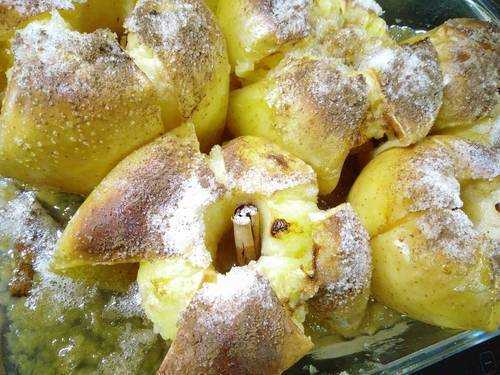
Popular allergens
Let's look separately at the most popular allergenic products.
Milk
Casein allergies in children are very common. Moreover, this applies not only to cow’s milk, but also to goat’s milk. Most often, children on artificial nutrition encounter it. Breastfed babies are often susceptible to it if the mother eats too many dairy products during the lactation period.
Quite often, a child with a food allergy to milk can safely eat sour milk. When making fermented milk products, hydrolysis occurs and casein is partially broken down into simpler amino acids. However, you should be careful.
Gluten
Some grains contain the plant protein gluten, which ranks second on our list of popular allergens. These include rye and wheat from the first food group.
Accordingly, an allergy to wheat automatically excludes the consumption of flour products, baked goods, pasta dishes and some cereals. An alternative to wheat bread is usually baked goods made from oatmeal and corn flour.
Egg white
It is the protein that causes the high allergenicity of chicken eggs. The eggs of other birds are also at risk, but to a lesser extent.
It is better for a little allergy sufferer to start getting acquainted with quail eggs - they are less dangerous.

Seafood
Sea and river fish, any seafood (including caviar) are also strong irritants of food allergies.
It is the allergy to fish that has the highest percentage of “survival” and often remains with a person for life.
Nutritional supplements
All kinds of dyes, preservatives, flavors and flavoring additives. They are included in most products. Speaking of children, it is worth paying special attention to yoghurts, juices, carbonated drinks, sauces, and instant cereals.
Food additives are known to be harmful, and it is easier to exclude them from a child’s diet than the natural products listed above. It would be a good idea if you limit food additives in your diet.
Cross allergy
The concept of “cross allergy” is worth highlighting separately. An important nuance when creating a menu for a child with allergies that should not be overlooked. Products with a similar protein structure can cause allergies, although they themselves are not allergens.
So, with an allergy to cow's milk protein, an aggressive reaction may occur to beef. A wheat allergy causes intolerance to all grains. An allergy to milk can also cause intolerance to cottage cheese, sour cream, cream and butter.
By eliminating direct irritants and cross-reactions from the menu, you can speed up the onset of remission. Be sure to study and remember the “twin” allergens for your case.
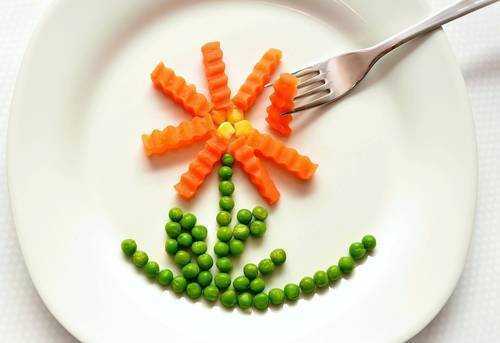
Hypoallergenic mixtures
Despite the fact that these mixtures are called hypoallergenic and are widely advertised in terms of their absolutely harmless use, and a mother can easily choose them even without a doctor’s prescription, these mixtures are not intended for the treatment of children with an allergy to cow protein!
The basis of hypoallergenic mixtures is a partial protein hydrolysate, in other words, the mixture contains peptides that can cause the development of various allergic manifestations in children. If your baby has already been diagnosed with a milk allergy, this formula is definitely not suitable.
Preventive hypoallergenic formulas are prescribed by a doctor as starter formulas for children who are at increased risk of developing an allergy to cow's milk protein. Also, these mixtures serve as a kind of start when transferring the baby to constant artificial feeding.
The following hypoallergenic mixtures have proven themselves well: Humana GA, NAN hypoallergenic, Similak GA, Nutrilon GA, Nutrilak GA, Frisolak GA, Combiotic 2 and Hipp GA.
In case of severe allergies, the child is transferred to the elemental mixture Nutrilon Amino Acids, which contains a set of amino acids instead of protein. This mixture cannot cause allergies under any circumstances. The elemental mixture Nutrilon Amino Acids is the final step in choosing a mixture for a child with allergies.
Doctor
Food diary
Food allergies are treated primarily with diet therapy. To properly maintain and control it, you need to keep a food diary in which you will record the date, time and quantity of a new product introduced into the menu. And also the presence or absence of an allergic reaction to it (what kind, at what time). A diary will help you not to lose sight of anything, pay attention to little things, and not forget or lose valuable information.
Menu for 1 year of life
Diet varies not only depending on the allergen. Age decides a lot. Breastfed babies are the most protected. But a nursing mother needs to be careful and follow a diet. After all, everything she eats goes into the baby’s stomach along with the milk. You should try a new product in the morning, a little at a time, to see if a reaction occurs. If there is no reaction, then you can include a new product in your diet.
It’s another matter if, for some reason, feeding the baby is based on an artificial formula. The difficult task here is to choose the mixture that best suits you. Study the composition of the porridge and customer reviews. But the most important thing is how the baby reacts. If signs of an allergy appear, change immediately.
- The first complementary foods for infants with allergies are introduced a little later than for healthy children. The recommended age for the first complementary feeding is 7 months. Try giving vegetable puree first. The puree should be from one vegetable: broccoli, zucchini, cauliflower. The puree can be homemade (especially good if you use your own vegetables from the garden), or special canned food for children. Start with one or two spoons. It is advisable to do this also in the morning to monitor the food reaction. Don't forget to note what's new in your food diary. If there is no reaction, then gradually increase the dose, bringing it to the full portion.
- The second complementary food is introduced into the menu of an allergic child at 8 months. Add dairy-free cereals if you have a milk allergy, or gluten-free cereals if you have a wheat allergy. They are made with water or a special mixture. When preparing porridge at home, add a small amount of vegetable oil. When choosing ready-made porridge, pay attention to the composition and content of vitamins and minerals.
- After 8-9 months, canned meat is introduced into the diet. You can also make them yourself or purchase ready-made ones. As a rule, they start with rabbit meat, as the least allergenic type of meat. Proceed in the same proven way: introducing the supplement gradually, little by little and under close supervision.
- You should try fruit purees no earlier than 10 months. It is better to give preference to green apple or pear puree. In general, try to choose fruits that have a dull color. If the apple and pear are well digested without consequences, at 10 months you can try banana and plum puree. Still try to introduce new foods in the first half of the day and a little at a time.
- The nutrition of a baby up to one year is based on complementary foods that have already been introduced. A new product can be introduced to an allergy sufferer’s menu at 1 year of age. You should abstain from fish products and chicken eggs until you are one year old. The menu for a one-year-old child with allergies can be expanded by introducing fermented milk products. Start with kefir, then you can try cottage cheese and other fermented milk. Try milk porridges, which are acceptable for allergy sufferers aged 1 year.
Diet for children from 1 to 3 years old
- After a year, we eat only what did not give any aggressive reactions. Proven fruits and vegetables, gluten-free cereals, non-allergenic meat dishes, dairy products with which the body has managed to make friends.
- Allergists call the age of 2-3 years a turning point. It is by this age that, by adhering to competent diet therapy, it is possible to get rid of most food reactions. Therefore, all that remains is to try and hold on.
- Having crossed the border of 3 years of age, carefully introduce foods into the allergy sufferer’s diet that previously caused a negative immune response. When comparing the results with your food diary, first choose foods from groups 2 and 3. To be on the safe side, try thermally processed food options, they are less aggressive. For example, not a fresh red apple, but a baked one. Monitor your reaction and remember to consult an allergist. Food allergies are not a death sentence. The result will definitely pay off your efforts.

Menu options
Below are a few examples of dishes for children with allergies, from which you can easily create a menu for the week.
Breakfast
- crumbly buckwheat porridge with sugar;
- oatmeal porridge with sweet apple;
- rice porridge with soy milk;
- corn porridge with prunes;
- salad of cottage cheese, cucumbers and herbs;
- baked sweet apple.
First courses (vegetable broth)
- vegetable soup;
- zucchini soup;
- potato soup;
- meatball soup;
- lentil soup;
- vegetarian borscht
Meat dishes
- turkey meatballs with zucchini;
- beef balls;
- lean pork meatballs with cabbage and rice;
- steam cutlets;
- minced meat gravy;
- meat with vegetables in the oven.
Side dishes
- unsweetened cereals;
- salads from permitted vegetables (dressing - oil);
- vegetable and cereal casseroles;
- boiled or stewed potatoes;
- vegetable stew.
Dessert
- sweet casseroles;
- fresh and baked fruits;
- oatmeal cookies;
- chickpea pancakes;
- oat muffins;
- oat cookies.
Beverages
- green tea;
- weak black tea;
- berry jelly;
- compote;
- fruit drink;
- still mineral water.
To begin with, use special recipes for children with allergies. Baking without eggs, milk and wheat flour if you are allergic to gluten and allergic to milk protein. Soups without meat broths for meat allergies. Meat dishes prepared for children with allergies should be boiled, stewed or steamed. Before cooking, do not forget to check the composition of the dishes, taking into account the individual needs of the baby.
Blends based on highly hydrolyzed protein
There are mixtures with partially hydrolyzed milk protein (the likelihood of an allergy to them is high), and there are mixtures with highly hydrolyzed milk protein. Protein can be casein (roughly speaking fermented milk) and whey protein. Casein is widely believed to be more bitter.
1. Nestle Alfare . The doctor advised us to switch to Alfare mixture with triangle (for gastrointestinal disorders). According to the doctor, it suits 90% of children, but is not very tasty.

As it turns out, “not very tasty” does not reflect how untasty it is. If you've ever been prescribed calcium chloride, this is what it tastes like. Burningly salty and bitter. Children who have previously consumed other formulas refuse to drink it.
The mixture did not suit us. After the first use, we started vomiting. Several times after meals in volumes from a teaspoon to a tablespoon and even more. The second negative point is the rash. I started adding it a little at a time, and by the third day the child was constantly scratching his ears, even in his sleep. Despite the ointment and cap, they managed to scratch their ears until they bled. In general, there was not much rash, but the skin was apparently itchy.
And I don’t recommend this mixture to anyone at all. The nastiest we've ever tried. I'm also allergic to it.
2. Friso PEP . Attention: this mixture is low-lactose, that is, it may not be suitable for a child with lactase deficiency. I watched the child's reaction. Periodically added Lactosar (a digestive enzyme for breaking down lactose) to the mixture. We switched to this mixture on our own after Alfare. The taste is as different as heaven and earth. The first impression was that the mixture tasted like milky water, sweet. Over time, I began to feel a slight note of bitterness. It smells nice too. We did not sprinkle this mixture. This is a casein mixture.
3. Friso PEP AC . The gastroenterologist convinced us that it is not the case to drink a low-lactose mixture when there is a lactose-free one. We decided to try it. I forgot to say Friso has cans of 400g and 800g. Not all mixtures have large jars. The taste of Friso Pep AC is different from Friso Pep. This mixture is not sweet at all. The note of bitterness is clearly felt. Slightly salty. In general, it’s not disgusting, but I add sugar to my porridge with it. Also casein hydrolyzate.
4. Nutrilon Pepti Gastro . I took this mixture from the store out of desperation, since we didn’t have ours, and I don’t want to run to the shops during a pandemic. In fact, it turned out to be the most delicious of all hydrolysates. This mixture is whey hydrolysate. The only one of all the mixtures that a child sometimes drinks (from a mug, through a straw, no more than 50 ml, but he drinks). Doesn't smell like anything, light sweet notes. To taste - sweet milky water. Now we decided to stop there. It's a pity there is no big jar. The color is slightly yellowish cream.


